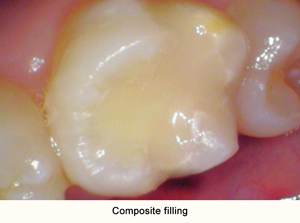Mercury-free filling options

Mercury-free dental fillings have been developed and studied for over fifty years. As a result, a wide variety of alternatives to mercury amalgam fillings are available today. The most popular mercury-free fillings include:
- Composite
- Glass Ionomer
- Compomer
Advantages of mercury-free fillings
Mercury-free dental fillings offer many advantages:
- Environment-friendly: Composites and glass ionomers are mercury-free, and there is no evidence of environmental toxicity.
- Preserve teeth: The placement of mercury-free fillings allows for less tooth destruction, which preserves more natural tooth structure. Composites fillings can also strengthen and enhance biomechanical properties of the restored tooth. As a result, the tooth itself can survive longer.
- Easier to Repair: Composite fillings are easier to repair than composites – which can save you both tooth structure and money.
- Durable: Recent studies show that properly placed composite fillings can last just as long as– or even longer than – amalgam fillings.
- Prevent caries: Glass ionomers, used in atraumatic restorative treatment (ART), have proven valuable in certain clinical situations where they can be more accessible and less expensive than amalgam (for example, in communities without electricity).
- User-friendly: All properly trained dentists can place mercury-free fillings in any tooth requiring a filling. If a dentist tells you he or she has to use amalgam because it is too hard to use a mercury-free filling in your tooth, find a more competent dentist!
Increasing use of mercury-free fillings
Because mercury-free dental restorations are increasingly effective, available, and affordable, a growing number of countries have already made significant progress in phasing down – and even phasing out – amalgam use. The chart below shows the percentage of total fillings that are amalgam versus how many are mercury-free in several countries.
